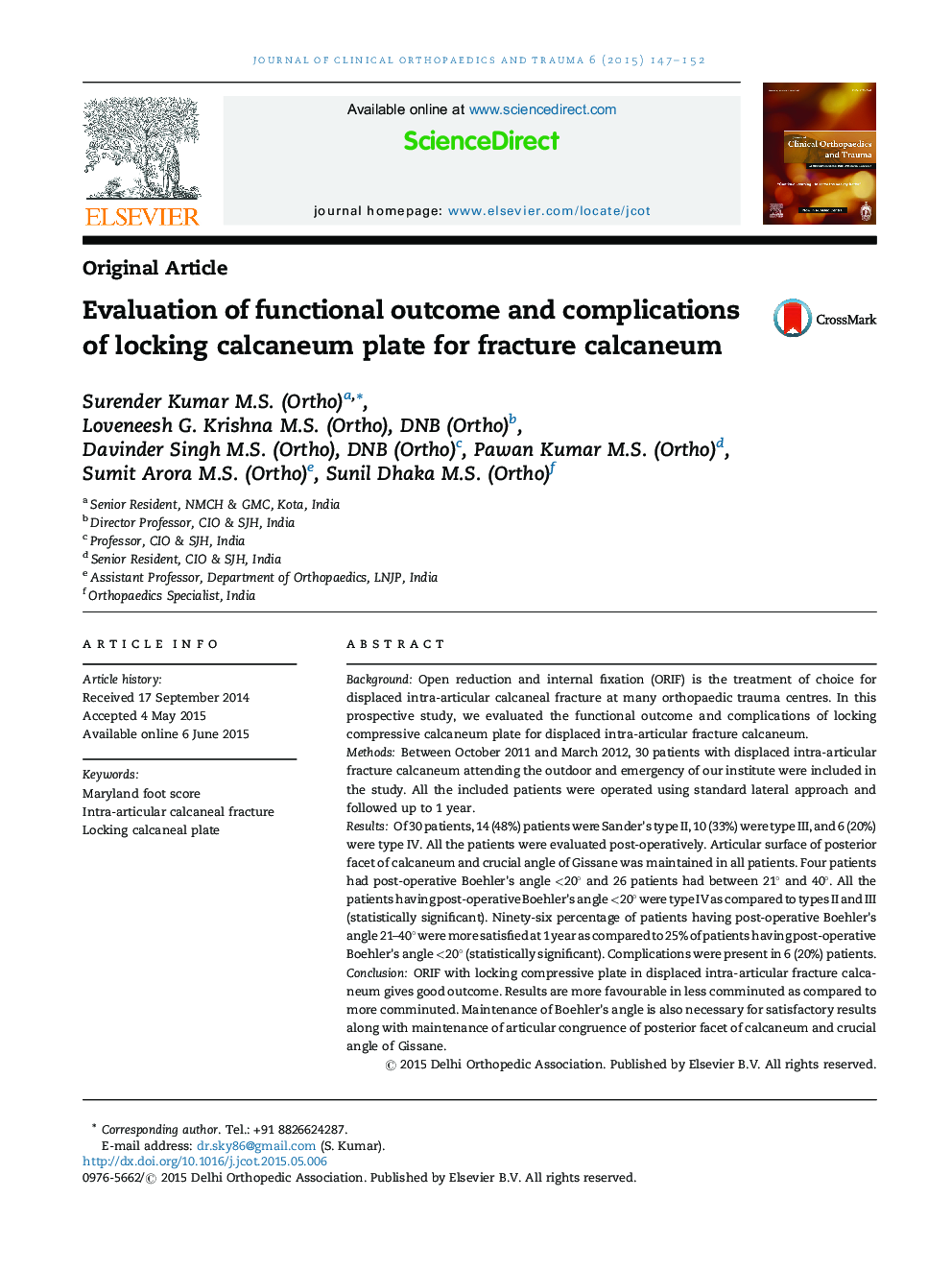| Article ID | Journal | Published Year | Pages | File Type |
|---|---|---|---|---|
| 3245232 | Journal of Clinical Orthopaedics and Trauma | 2015 | 6 Pages |
BackgroundOpen reduction and internal fixation (ORIF) is the treatment of choice for displaced intra-articular calcaneal fracture at many orthopaedic trauma centres. In this prospective study, we evaluated the functional outcome and complications of locking compressive calcaneum plate for displaced intra-articular fracture calcaneum.MethodsBetween October 2011 and March 2012, 30 patients with displaced intra-articular fracture calcaneum attending the outdoor and emergency of our institute were included in the study. All the included patients were operated using standard lateral approach and followed up to 1 year.ResultsOf 30 patients, 14 (48%) patients were Sander's type II, 10 (33%) were type III, and 6 (20%) were type IV. All the patients were evaluated post-operatively. Articular surface of posterior facet of calcaneum and crucial angle of Gissane was maintained in all patients. Four patients had post-operative Boehler's angle <20° and 26 patients had between 21° and 40°. All the patients having post-operative Boehler's angle <20° were type IV as compared to types II and III (statistically significant). Ninety-six percentage of patients having post-operative Boehler's angle 21–40° were more satisfied at 1 year as compared to 25% of patients having post-operative Boehler's angle <20° (statistically significant). Complications were present in 6 (20%) patients.ConclusionORIF with locking compressive plate in displaced intra-articular fracture calcaneum gives good outcome. Results are more favourable in less comminuted as compared to more comminuted. Maintenance of Boehler's angle is also necessary for satisfactory results along with maintenance of articular congruence of posterior facet of calcaneum and crucial angle of Gissane.
